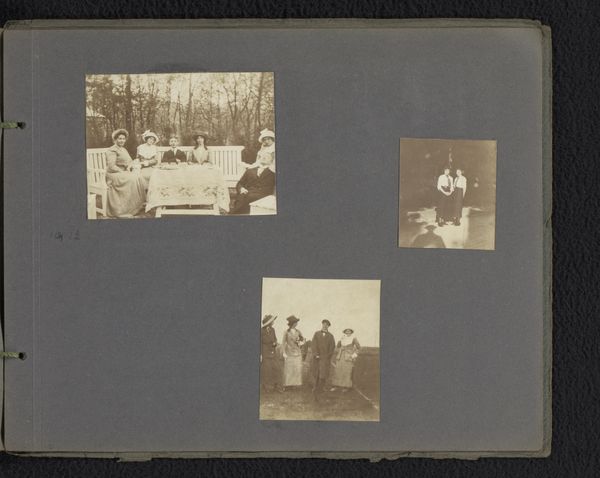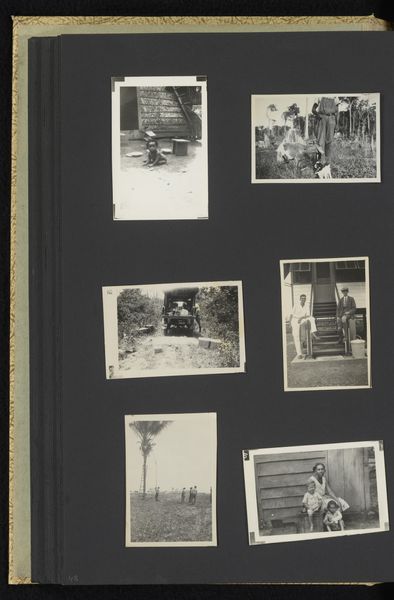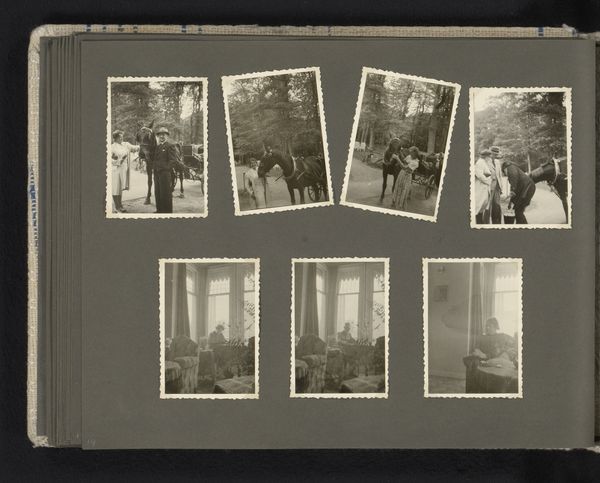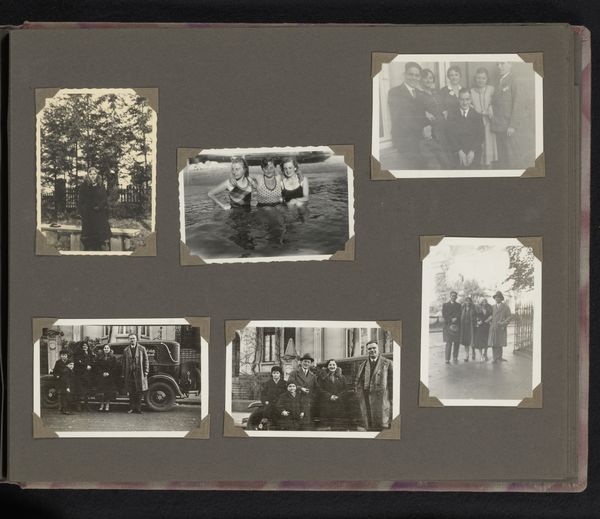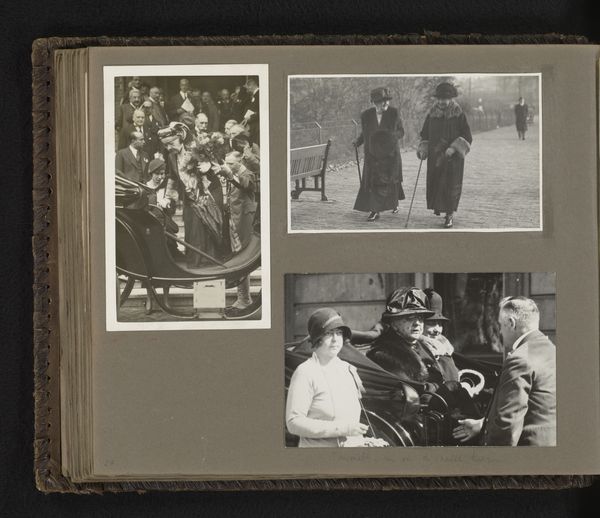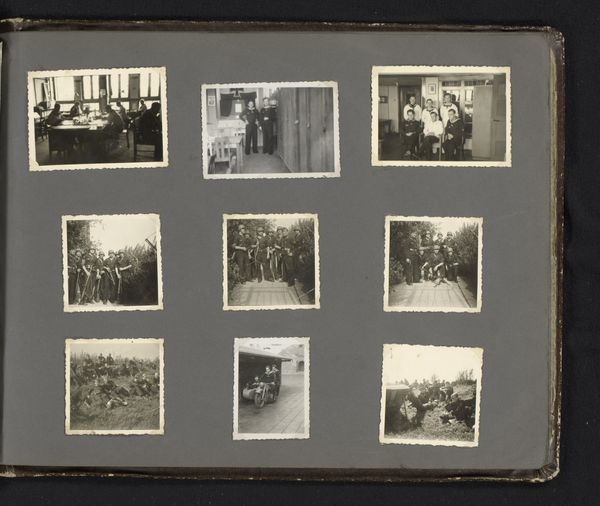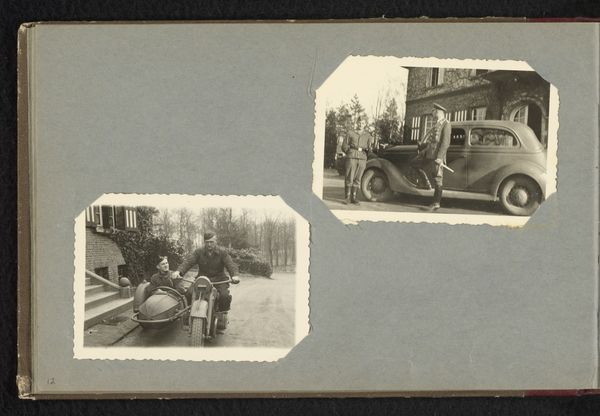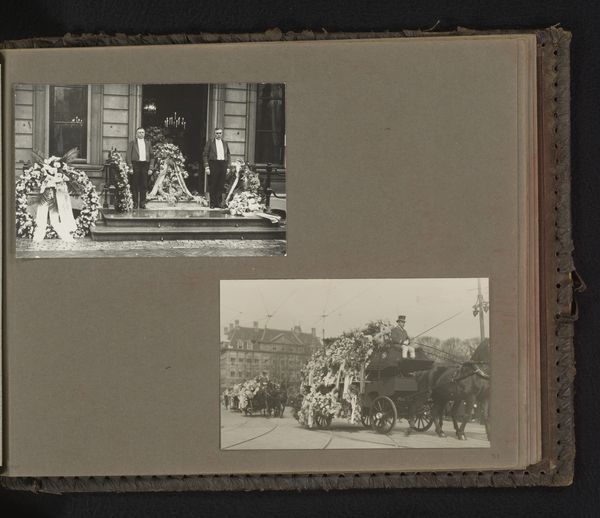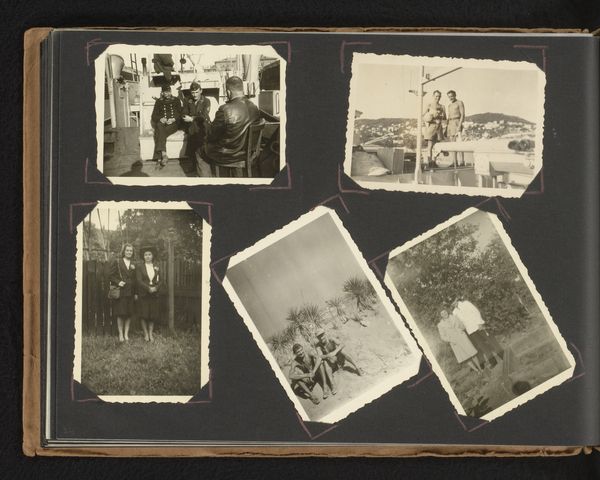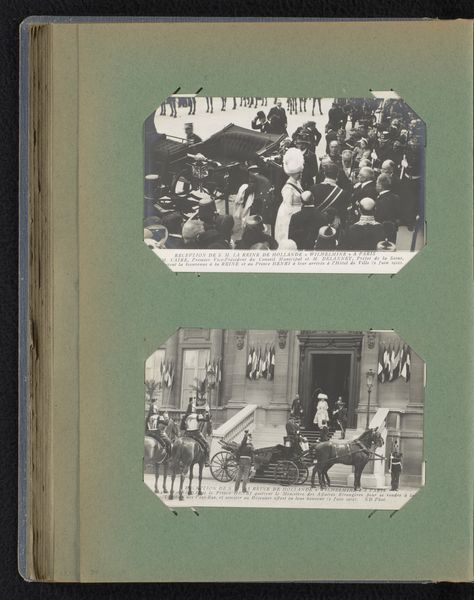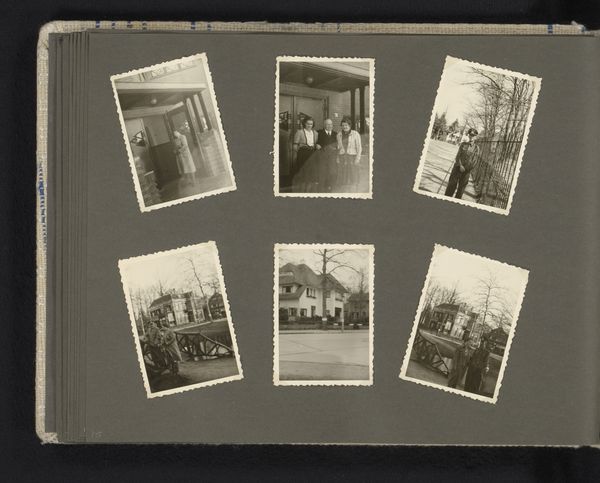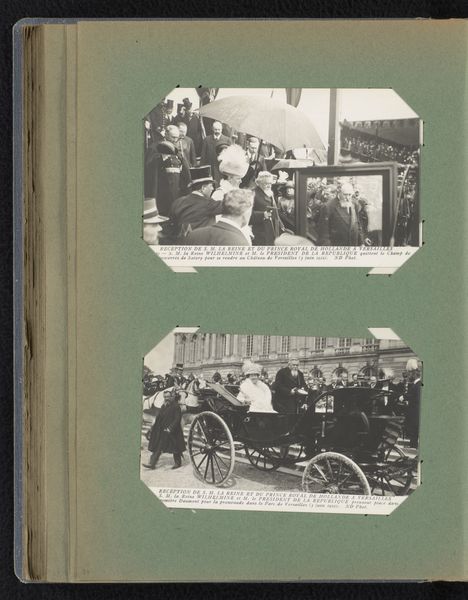
Twee foto's van koningin-moeder Emma bij diverse gelegenheden 1930 - 1934
0:00
0:00
photography, gelatin-silver-print
#
portrait
#
street-photography
#
photography
#
group-portraits
#
gelatin-silver-print
#
modernism
Dimensions: height 220 mm, width 262 mm
Copyright: Rijks Museum: Open Domain
Editor: Here we have "Two Photos of Queen Mother Emma on Various Occasions," a gelatin silver print from between 1930 and 1934 by an anonymous artist. It feels almost like a collection of candid shots documenting a royal figure in various settings. What stands out to you? Curator: For me, the power lies in how these photographs demystify royalty, presenting Queen Emma within very specific material and social conditions. We see her interacting with a motorcar, in a crowd, on what seems to be a domestic stoop – markers of the era’s changing modes of transport, public gatherings and evolving notions of domesticity. It is about power and production. Who produced the image, where it circulates, and what materials allowed for this record? Editor: That's a perspective I hadn't considered. I was focused on the kind of traditional aspect of portraiture and its usual presentation of power. Curator: The 'tradition' of royal portraiture becomes material itself. Look at the grain of the silver gelatin print, and how photography itself was rapidly changing the representation of people – including, in this case, Queen Emma. What labour was involved? What photographic processes? And where might these prints have circulated – a newspaper, a family album? Editor: So you’re less interested in Queen Emma as an individual, and more about photography as a mode of production? Curator: Precisely. And by extension, how this mode then informed and transformed the notion of royalty for the common viewer, their daily life, by inserting images in popular, quotidian contexts of mass-media and reproducibility. This isn’t simply about capturing an image, but about the industrial processes through which a new form of representing royalty could take shape and be spread about. Editor: I see what you mean. Considering the social context of its production gives the photographs another layer of meaning. Curator: Absolutely. By shifting the focus to materiality, process and circulation, we are not just looking at a royal portrait, but critically considering how this photographic process reflects the transformation of both photography, labor, and even royal imagery itself.
Comments
No comments
Be the first to comment and join the conversation on the ultimate creative platform.
